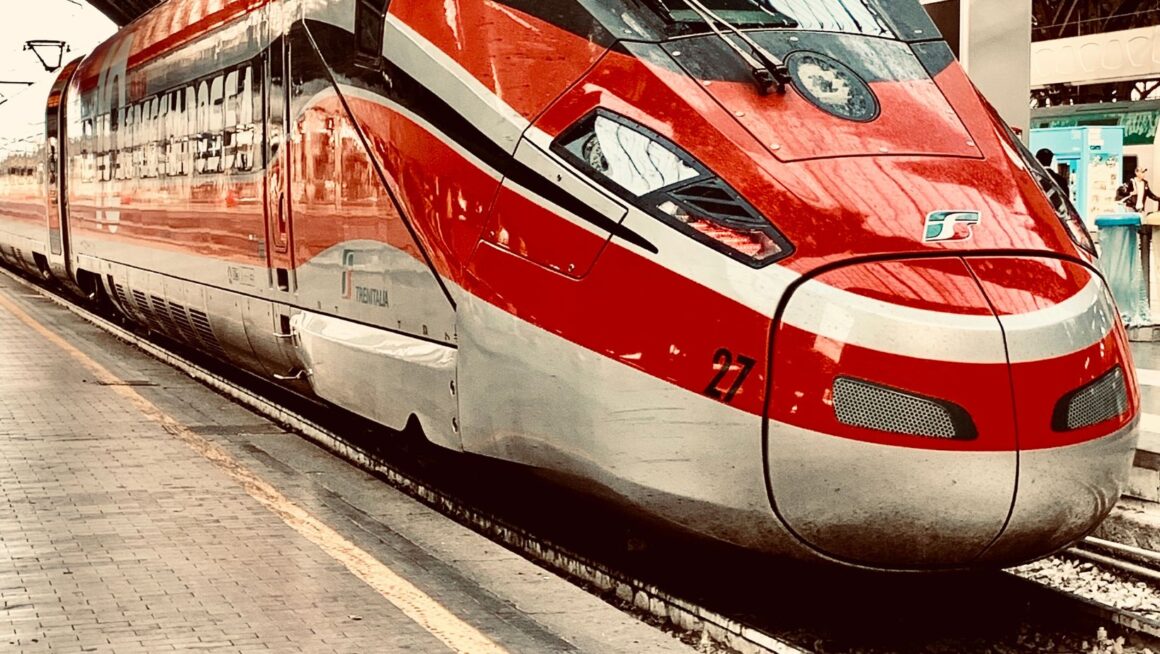In the 1990s, Japan’s world-famous Shinkansen, or bullet train, had a noisy problem. As it exited the tunnels at over 150 miles per hour, it produced a deafening “tunnel boom” that could be heard a quarter of a mile away. Engineers were baffled by the sonic shockwave created by the train compressing the air. The solution, however, wasn’t found in a wind tunnel or a physics textbook, but by observing a small, iridescent bird. Nature, it turns out, is the ultimate engineer, having refined its designs over millions of years, leaving nothing to chance. This principle of perfect design stands in stark contrast to games of luck, such as those found at https://fortunica-online.com/en-gb, where outcomes are governed by probability rather than flawless optimisation. Engineers realised that to solve their high-speed problem, they needed to look at nature’s masters of high-speed entry: the kingfisher.
This fascinating story is a prime example of biomimicry, a field where science and nature intertwine to solve some of humanity’s biggest challenges. So how did a humble bird inspire one of the world’s fastest trains?
A Tale of Two Worlds: The Engineer and the Kingfisher
The connection between a speeding train and a diving bird seems unlikely, but it was born from a simple observation by Eiji Nakatsu, a Japanese engineer and an avid bird-watcher. He realised the challenge his team faced was remarkably similar to one the kingfisher had already mastered.
The Problem: A Thundering Headache
When the bullet train entered a tunnel, it pushed a wave of atmospheric pressure ahead of it. This wave travelled down the tunnel, and as the train emerged, the compressed air would exit with explosive force, creating the loud boom and vibrations that plagued nearby residents. The original, blunt-nosed design of the train was simply not aerodynamic enough to handle this extreme change in air pressure gracefully.
Nature’s Perfect Dive: The Kingfisher’s Secret
Nakatsu recalled how a kingfisher can dive from the air (a low-resistance medium) into water (a high-resistance medium) at incredible speed with barely a splash. The secret lies in the shape of its long, streamlined beak. The beak gradually increases in diameter from the tip, allowing it to part the water smoothly rather than pushing it away forcefully. This elegant design minimises the pressure change and allows for a near-seamless entry.
The ‘Aha!’ Moment: Bridging Biology and Engineering
The engineering team saw the genius in this design. They completely remodelled the nose of the Shinkansen 500 series to mimic the exact shape of the kingfisher’s beak. The results were astounding. The new train was not only 10% faster and used 15% less energy, but the infamous tunnel boom was eliminated entirely. By copying the bird, the engineers had created a more efficient, quieter, and faster machine.
The Blueprint of Life: What Is Biomimicry?
The kingfisher and the bullet train story perfectly illustrates the core idea of biomimicry: the practice of learning from and emulating nature’s strategies to solve human design challenges. It’s an approach that recognises that the natural world has already solved many of the problems we are grappling with today. After 3.8 billion years of research and development (evolution), nature has perfected designs that are sustainable, efficient, and resilient.
Harnessing this ancient wisdom offers profound benefits for modern innovation:
- Proven Solutions: Biomimicry taps into time-tested strategies that have been refined by natural selection to be incredibly effective.
- Sustainable Models: Nature’s designs often operate on principles of low energy use, recycled materials, and zero waste, providing a blueprint for sustainable technology.
- Renewed Perspective: It encourages a shift in thinking, moving us from a resource-exploiting mindset to one that learns from and respects the genius of the natural world.
This approach has inspired countless other innovations that are hiding in plain sight.

More Genius in Plain Sight: A Gallery of Natural Wonders
Once you know what to look for, you can see examples of biomimicry everywhere. Nature’s influence is quietly shaping our world in ways you might not expect.
The Gecko’s Grip: Adhesion Without Glue
Geckos can scamper up walls and across ceilings thanks to the millions of microscopic hairs on their toes. These hairs create a molecular attraction called van der Waals forces, allowing for incredible adhesion without any sticky residue. This has inspired the development of powerful, reusable adhesives that can hold heavy objects and then be removed without a trace.
The Lotus Leaf Effect: The Art of Staying Clean
The lotus flower is a symbol of purity, partly because its leaves are famously self-cleaning. The leaf’s surface is covered in microscopic bumps that cause water to bead up and roll off, collecting dirt and grime as it goes. This “lotus effect” has been replicated in self-cleaning paints, glass, and fabrics that repel water and dirt.
The Termite’s Tower: Architecture That Breathes
Termites in Africa build colossal mounds with complex networks of vents. These structures allow them to maintain a stable temperature inside, even when outside temperatures swing dramatically. Architects have studied these mounds to design energy-efficient buildings that use natural ventilation for cooling, drastically reducing the need for air conditioning.
Become a Nature Detective: Your Guide to Spotting Biomimicry
The most exciting thing about biomimicry is that it’s a field of discovery open to everyone. Nature’s genius is all around us, waiting to be noticed. By learning to observe the world through the lens of a problem-solver, you can start to see the hidden solutions that lie in your own back garden.
Ready to start? Here’s a simple guide to thinking like a biomimicry expert:
- Start With a Problem: Think of a human challenge, big or small. For example, “How can we reduce noise?” or “How can we create materials that repair themselves?”
- Find a Parallel in Nature: Ask yourself, “How does nature solve this?” For self-repair, you might think of how skin heals or how plants mend themselves.
- Observe the Mechanism: Look closely at the biological strategy. What is the underlying principle that makes it work?
- Imagine the Application: Brainstorm how that natural principle could be applied to your human problem.

The next time you see a spider’s web, a seashell, or a flock of birds, pause and wonder. You might just be looking at the solution to our next great innovation.

